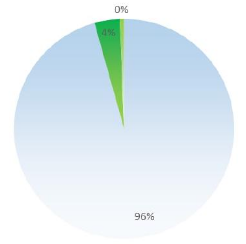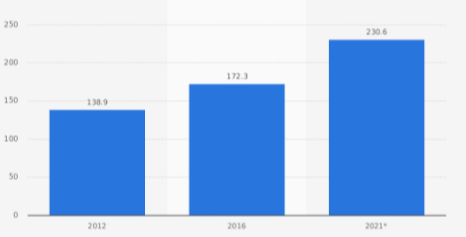Background
The need for growth and expansion is an essential part of every business organization. Companies tend to spread their operations in various areas to enlarge their market share. Business organizations usually venture into foreign markets to increase their rate of returns and expand brand awareness. Before taking the initiative of getting into the new market, it is necessary for the firm to have deep insight into the industry in the given country. Lululemon is a multinational business company that deals in the clothing industry. The apparel company wants to expand its operations into the Finland market. This paper will analyze Finland’s market for the clothing industry in terms of market size, consumer buying habits, behavior, growth trends, geographical regions, competitors, and government regulations.
Finland is a country in the Northern part of Europe with a total population of about 5,500,000 people and a Gross Domestic Product (GDP) of $67,870. The fashion industry has been progressing effectively in the country, with most of the players being small and medium-sized companies. These firms produce clothing for sportswear, festive seasons, and professional attire. The consumers value quality, style, brand, and comfort they derive from the product.
Market Size and Growth Trend
In the country, the clothing industry consists of about 5 percent of the market share as shown in figure 1. The regional market size amounts to about US$4.4 billion. Most of the sales revenue in the market comes from the purchase made by female consumers who value quality style and taste (Dang 32). The growth rate of the clothing industry is expected to increase by about 4.25 percent annually, as displayed in figure 2.


Consumers’ Buying Behavior
Consumer buying behavior refers to the customers’ activities before buying the commodity. In the Finnish fashion market, customers are influenced by several factors while deciding on what apparel product to purchase. Clients’ behaviors would probably result in them connecting or even buying the product (Haralayya 215). In the country, consumers’ buying behavior is majorly influenced by social factors, personal aspects, cultural and psychological factors. In the industry, most competitors consider the social factors that derive how some consumers make choices on the type of clothing they purchase, for example, individuals from the high social class prefer fancy and classy products than people from low society. Other customers also value the motives a product generates for them, which satisfies their psychological needs. Personal factors like age and sex also determine the decision to buy products in the market.
Geographical Regions
The clothing firms usually set their stores in areas with a high population like urban centers, towns and cities. Most cities and towns’ populations consist of individuals of the working class that have enough income to purchase the products. Due to the high number of people in such locations, companies are capable of making a good return on sales. Most of the local and international clothing industries have their stores spread in most cities and towns within the country.
Competitors in the Finnish Apparel Market
The industry consists of small and medium-size local firms that offer clothing products to consumers. Some foreign firms have also invested in the Finnish fashion industry. They include H&M, Lindex, Zara, and Gina Tricot. The table below shows a summary of the competitors with their market value.
Table 1: Competitors in the Clothing Industry
Potential Market Size of Lululemon Retail Company
According to the ability of Lululemonn athletica to offer quality products, it will be easier for the business organization to capture the attention of most consumers with its brands like ivviva brands. The firm’s specialization to make clothing products for men, women, and children will increase consumers’ market base. The product’s design and quality will make the firm experience high sales that would approximately generate $275 million.
Policies and Regulations
Openness and Transparency of Decision Making
The policy allows the Finnish government authority to receive reports from domestic or foreign investors that might be affected in the industry in any way. According to Ben‐Aaron, in the market, transparent principles can reduce the cost of information (72). Through this policy, foreign companies are capable of understanding various administrative regulations in the industry. This is possible because they can quickly and easily access the information.
Non-discrimination Policy
The Finnish government authority has measures that ensure there is no discrimination in the industry to enhance fair competition regardless of the origin of the commodity being sold in the market. The policy is important for Lululemon Company since it will discourage the element of product discrimination, which can result in low sales. Having the equal opportunity, foreign investors have a chance of competing in the market.
The Finnish Trade Act
This policy requires any foreign firm that wants to launch a business operation in the country to submit a notification to the Trade Register that is held by the National Board of Patents and Registration. These processes have been simplified to reduce the burden and time taken to process the legal documents. It is aimed at reducing the restrictions that can hinder external business organizations.
Works Cited
Ben-Aaron, James, et al. “Transparency By Conformity: A Field Experiment Evaluating Openness in Local Governments.” Public Administration Review, vol. 77, no.1, 2017, pp. 68-77. Web.
Dang, Thuy. “Interest of Female Consumers in Finland about Sustainable Fashion: Survey on Female Consumers in Finland,” 2021. Web.
Haralayya, Bhadrappa. “Effect of Branding on Consumer Buying Behaviour at Vijay Bharat Motors Pvt Ltd, Bidar.” Iconic Research and Engineering Journals, vol. 4, no. 12, 2021, pp. 207-222.
